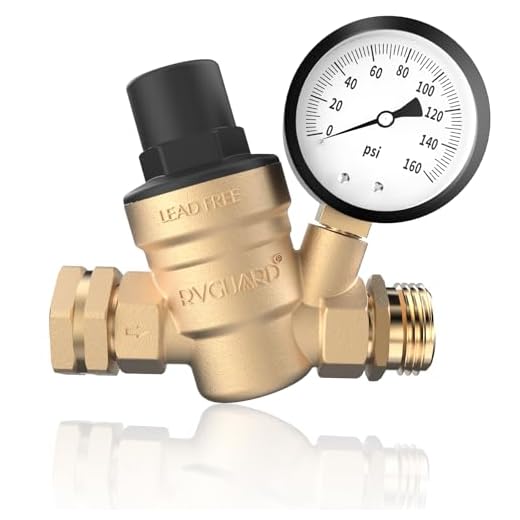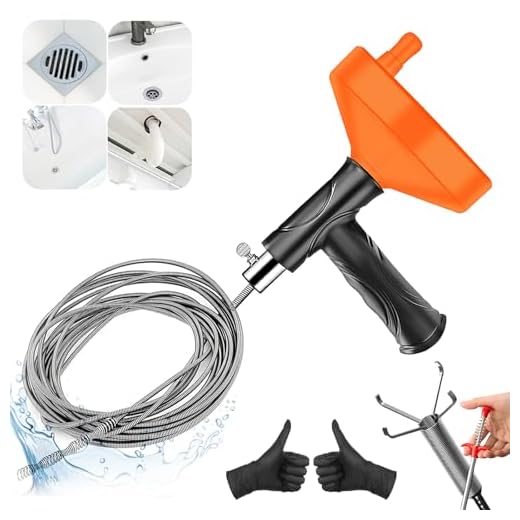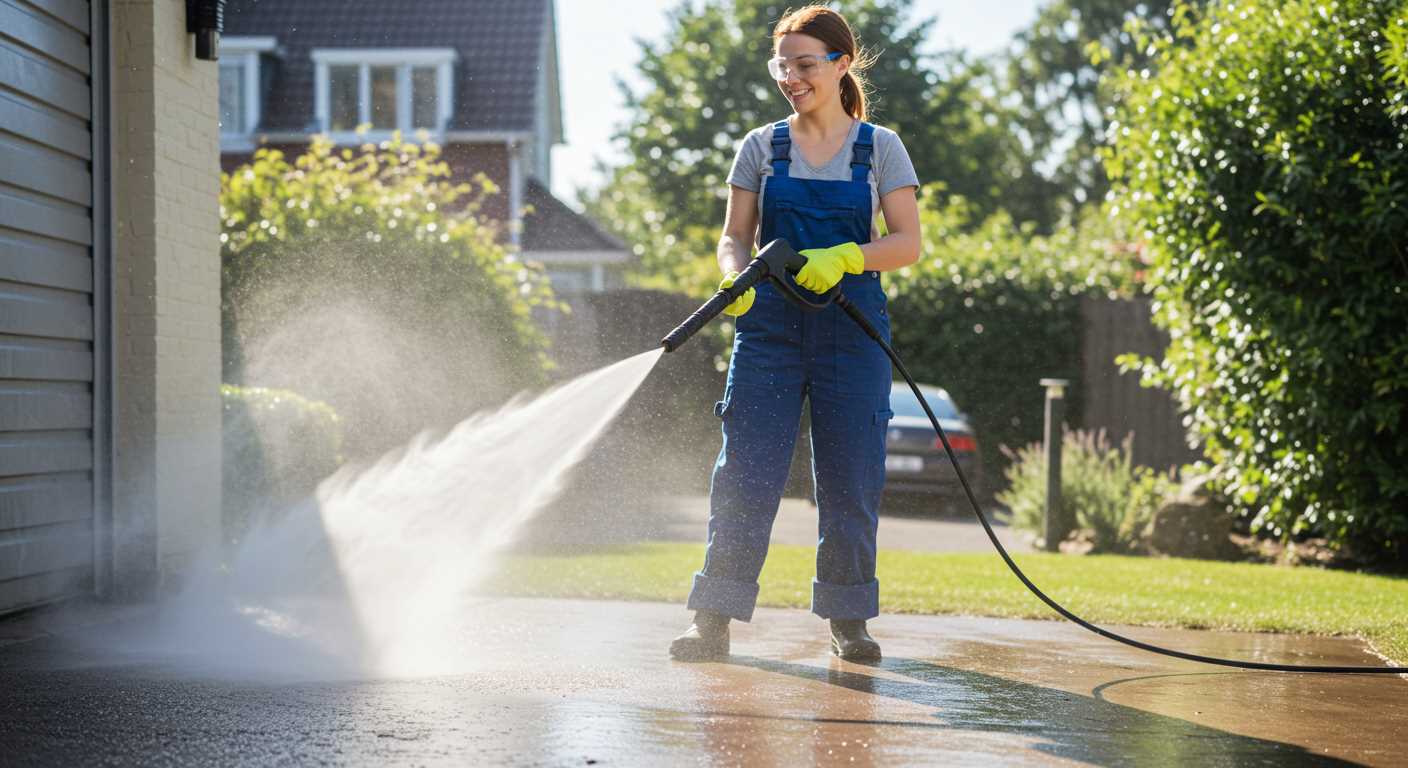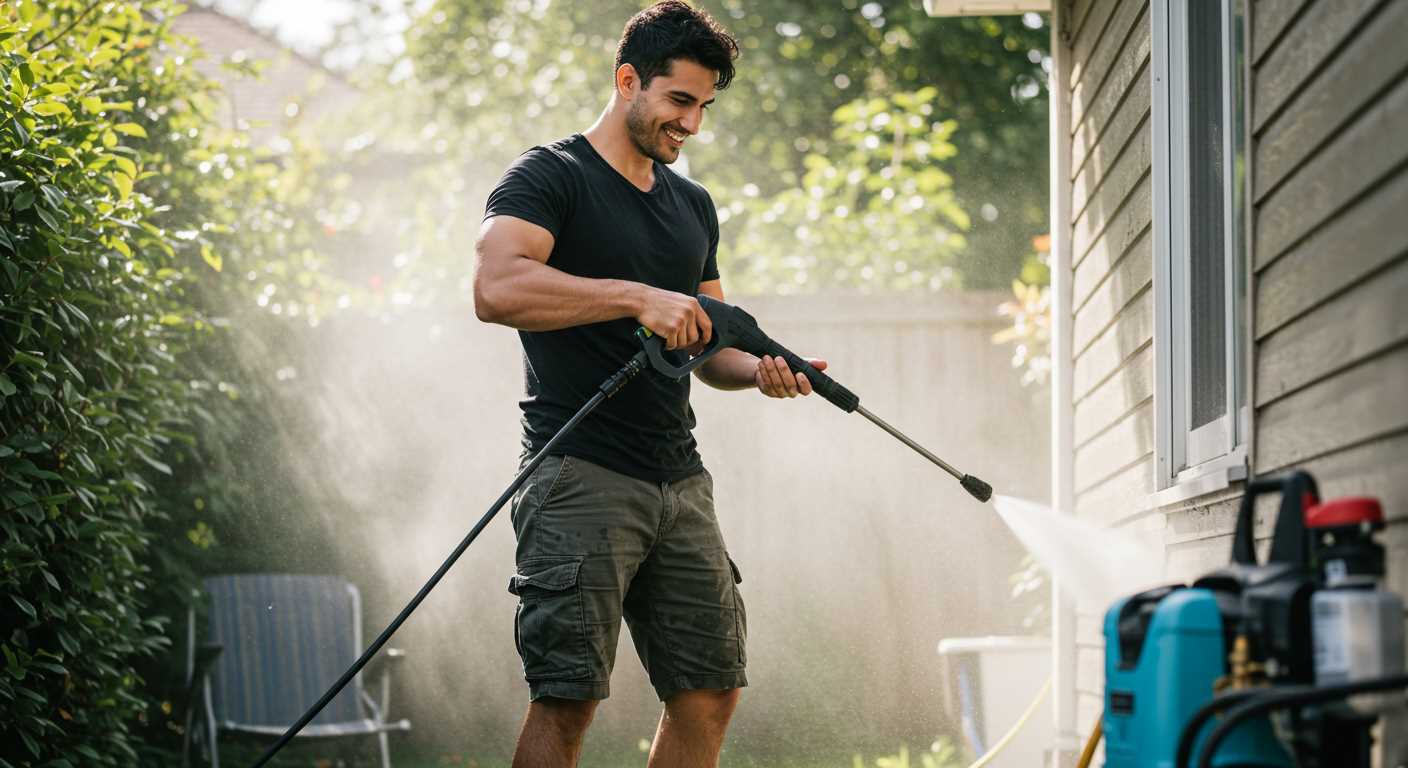



If you’re experiencing a lack of water flow from your equipment, the first step is to inspect the inlet filter. Over time, debris can accumulate and impede the water supply. Remove the filter and give it a thorough cleaning under running water to ensure it’s free from clogs.
Next, check the hose for kinks, leaks, or blockages. Any obstruction in the hose can significantly reduce performance. Detach the hose from both the machine and the spray gun, inspecting it closely. If you notice any damage, replacing the hose is essential for optimal function.
Moving to the nozzle, it’s vital to ensure that it’s not obstructed. A clogged nozzle can lead to reduced pressure. I recommend using a small tool, like a pin or a small wire, to clear any debris that may be lodged in the nozzle tip. This should restore the intended spray pattern.
If these steps do not resolve the issue, consider examining the internal components for signs of wear or blockages. Sometimes, sediment can gather within the machine, obstructing water flow. Disassembling the unit may be necessary, but ensure to follow the manufacturer’s guidelines for reassembly.
Regular maintenance is key. By routinely checking filters, hoses, and nozzles, you can prevent buildup before it becomes a problem. Armed with these practical measures, your high-pressure cleaning tool can operate smoothly and effectively, ensuring your cleaning tasks are completed with ease.
Steps to Resolve Blockages in Your Cleaning Equipment
First, disconnect the equipment from the power source and water supply to ensure safety. Inspect the inlet filter for debris. Remove and clean it with warm soapy water; a brush can help dislodge stubborn particles.
Next, check the hoses for kinks or sharp bends that might restrict flow. If found, straighten them and ensure they are securely connected. It’s wise to replace any damaged or worn hoses.
Move on to the nozzle. Detach it and examine for clogs. A thin wire or a pin can clear most blockages effectively. Rinse under warm water to remove any residue.
The detergent tank should also be cleaned. Sometimes, leftover soap can harden, obstructing flow. Empty the tank and flush it out with clean water; this helps maintain the overall function of the unit.
Finally, if issues persist, open the casing and inspect internal components. Sometimes, sediment can build up inside. Use a soft brush and compressed air to clean those areas. Remember to reassemble and test thoroughly after any maintenance.
Identifying Signs of a Clogged High-Pressure Unit
A noticeable drop in water flow indicates that something is obstructing the mechanism. If the stream is weak or inconsistent, it might be the first clue to a blockage.
Unusual noises can also signal an issue. If the device emits grinding or rattling sounds during operation, it is likely there’s an internal obstruction affecting its performance.
Monitoring the temperature is essential. If the motor or housing feels unusually hot, this may signal a strain caused by restricted fluid passage.
Common Symptoms to Observe
.jpg)
| Symptom | Possible Cause |
|---|---|
| Reduced water volume | Obstruction in hoses or fittings |
| Squealing or rattling sounds | Internal component blockage or damage |
| Excessive heat | Fluid not circulating efficiently |
| Pressure fluctuations | Inconsistent flow due to clogs |
Check the nozzle as well; if it appears clogged or the spray pattern is uneven, it indicates that the pathway is compromised. Additionally, if the pressure gauge shows erratic readings, it further supports the idea of a restriction affecting overall functionality.
Regular inspection of the water inlet screen can prevent future issues. If debris accumulates here, it restricts the flow and may lead to more significant problems down the line.
Gathering the Necessary Tools for the Unclogging Process

Ensure you have the following items ready: a set of screwdrivers (both flathead and Phillips), a adjustable wrench, and a socket set. These will help you dismantle various components if needed.
Have a bucket or container handy to collect any water or debris that may spill during the process. This keeps your workspace clean and organised.
A clean cloth will come in handy for wiping down surfaces and removing any grime that can obstruct clear visibility of the components.
Invest in a flexible wire or a plumbing snake; these tools will assist in reaching and removing stubborn blockages from narrow passages.
Use safety goggles and gloves for protection while working on the unit, as high-pressure water and chemicals may pose risks.
A garden hose with a spray nozzle can aid in flushing out residual debris once you access the internal areas.
Finally, keep a manual of your specific model close by. This is invaluable for reassembling parts correctly and identifying particular components that may require attention.
Disconnecting the Pressure Cleaning Equipment from the Power Source
Before attempting any maintenance, safety is paramount. Always disconnect your cleaning device from its electrical supply to prevent any accidental start-up while you work. Follow these clear steps to ensure a secure disconnection:
- Locate the power cord connected to the electrical outlet.
- Firmly grasp the plug–not the cord itself–and pull it out of the socket. This action preserves the integrity of the cord and minimises the risk of damage.
Dealing with Battery-Powered Variants
For battery-operated models, make sure to remove the battery pack completely. This step will ensure that no power is being supplied during your maintenance process:
- Identify the battery release mechanism; it may vary between designs.
- Press the release button or lever to disengage the battery, and store it safely away from the device.
Once disconnected, wait a few moments before proceeding with your work. It’s especially important to check for residual pressure in the system. This precaution reduces the risk of injury from any unexpected release of pressure when accessing the internal components.
Always refer to your user manual for model-specific instructions regarding power disconnections and safety protocols. Adhering to these guidelines facilitates a smoother and more secure maintenance experience.
Removing the Pump From the Pressure Washer Frame
To detach the mechanism from the housing, first gather the necessary tools: a socket set, pliers, and a wrench. Begin by locating the screws or bolts that secure the assembly to the frame. In most cases, these are situated at the base of the unit.
Using the appropriate socket, carefully remove each fastener. It’s advisable to keep them organised to prevent misplacement. Once the hardware is off, gently wiggle the assembly to loosen it from any remaining brackets or fittings.
If there are any hoses connected to the unit, take note of their arrangements as you disconnect them. Use pliers to ease out any clamps without damaging the hoses. If hoses are stuck, a twist might help free them without causing tears.
Lift the assembly straight up from the frame. Be cautious of any remaining connections that may still be attached to ensure a clean separation. If there’s resistance, double-check for overlooked screws or connections.
Once free, place the assembly on a flat surface for further inspection and cleaning. This step prepares you for the next phase of maintenance. Remember to apply a little silicone grease on the seals if you plan to reassemble the components.
Inspecting the Intake Filter for Blockages

Begin by locating the intake filter, typically situated at the inlet where water enters the unit. It’s important to remove any debris or buildup that may restrict water flow.
Steps to Inspect the Filter
- Detach the filter according to the manufacturer’s instructions; this may involve unscrewing or pulling it off.
- Examine the filter closely. Look for any signs of dirt, sediment, or other obstructions.
- If the filter appears dirty, rinse it under clean water. Use a soft brush or cloth to gently scrub away any stubborn particles.
- Check the filter’s integrity for any cracks or damage that might compromise its function. If damaged, replacement is necessary.
Reinstallation
.jpg)
After cleaning or replacing the filter, securely reattach it to the unit. Ensure that connections are tight and there are no gaps to prevent leaks.
Completing this inspection can significantly improve water intake, fostering better equipment performance during use. Regular checks are advisable to maintain optimal operation.
Clearing Debris from the Pump Housing
Begin by ensuring the cleaning device is completely disconnected from any electrical sources. With the area prepared, access the housing by removing any screws or latches securing it in place. Carefully detach the cover to expose the interior components.
Inspect the pump housing for any visible debris or clogs; a flashlight can be helpful here. Use a soft brush or vacuum to remove loose dirt, leaves, or other unwanted materials. For stubborn obstructions, warm soapy water can assist in loosening grime.
Check the seals and gaskets for wear. If they appear damaged, replace them to maintain optimal function. After clearing, reassemble the housing, ensuring everything fits snugly. This step is critical to prevent future issues.
Perform a test run without connecting to the main hose to verify that the motor operates smoothly. Listen for unusual sounds that might indicate remnants are still present. If all seems well, reconnect and proceed to use your equipment, monitoring for any signs of remaining blockages.
Reassembling the Equipment and Testing the Mechanism
Carefully position the components back together, aligning all parts accurately. Start by ensuring the gasket seals are correctly placed to avoid leaks. Reattach any screws or fasteners securely, making certain not to over-tighten them, which can cause damage.
Reconnect the hose connections firmly without cross-threading. Ensure any clips or clamps used are tight enough to prevent disconnections under pressure.
With everything back in place, restore the connections to the power supply and water source. Inspect for any visible signs of leakage before proceeding.
Power on the unit and let it run for a few minutes. Observe the flow of water: a steady stream indicates successful reassembly. Listen for unusual noises, which could suggest further issues requiring attention.
Perform a short test on a suitable surface to verify performance. The output should be powerful and steady, indicating the internal mechanics are functioning as intended.
After testing, disconnect the power and water supply again. Conduct a final inspection to ensure no components are loose and everything is in place. This attention to detail will prolong the life of the equipment and improve overall efficiency.
FAQ:
What are the common causes of a clogged pressure washer pump?
A clogged pressure washer pump can often be attributed to several factors. One of the most frequent causes is debris entering the pump, such as dirt, grit, or small stones. Additionally, using hard water can lead to mineral buildup within the pump, causing blockages. Incorrectly maintained filters can also contribute to clogs, preventing proper water flow. Regular maintenance and using clean, filtered water can help reduce these issues significantly.
How can I tell if my pressure washer pump is clogged?
There are several signs that may indicate your pressure washer pump is clogged. A noticeable decrease in water pressure is a primary indicator. If you observe that the pressure washer is taking longer to build pressure, or if it produces a sputtering sound while running, these are also strong signals of a potential clog. Additionally, if water is not flowing smoothly through the nozzle, it can suggest that the pump is obstructed and needs attention.
What steps should I follow to unclog a pressure washer pump?
To unclog a pressure washer pump, begin by disconnecting the machine from the power source and ensuring it is cool. Next, inspect and clean or replace the inlet filter, as it may be blocked. Remove the high-pressure hose and check for any knots or debris. If the nozzle is clogged, clean it using a thin wire or a brush. If these steps do not resolve the issue, consider disassembling the pump to inspect for internal blockages. Always refer to the manufacturer’s manual for specific guidance related to your model.
Are there any tools required to unclog a pressure washer pump?
Most unclogging tasks can be performed with basic tools. Commonly needed items include a set of wrenches or pliers for loosening fittings, a brush for cleaning nozzles, and a thin wire for dislodging dirt from tight spaces. Depending on the clog’s severity, you might also find it useful to have a bucket for collecting water, a screwdriver for disassembly, and possibly compressed air to blow out debris. Always make sure you have the right tools on hand before you start working on the pump.
How often should I check and maintain my pressure washer pump?
Regular maintenance of your pressure washer pump is recommended to ensure optimal performance and longevity. It is advisable to inspect the pump and its components before each use, especially if the machine has been inactive for a while. Cleaning or replacing filters every few months can also prevent clogs. Additionally, conduct a more thorough inspection and servicing annually, or more frequently if you use the pressure washer heavily. Following these suggestions can help maintain the pump’s efficiency and reduce the risk of clogs.










